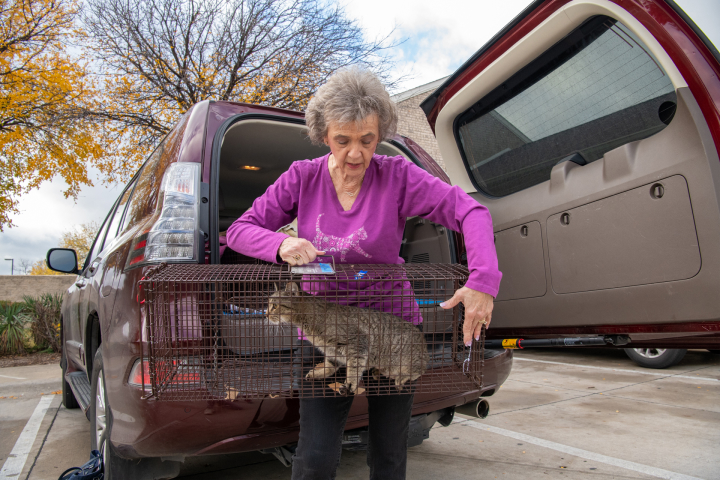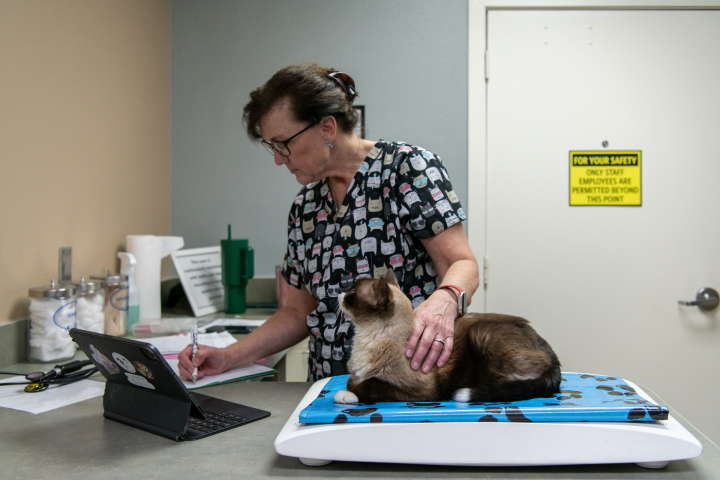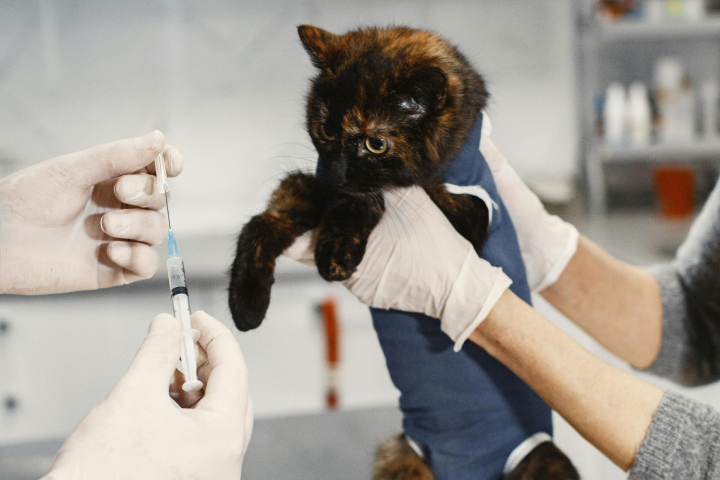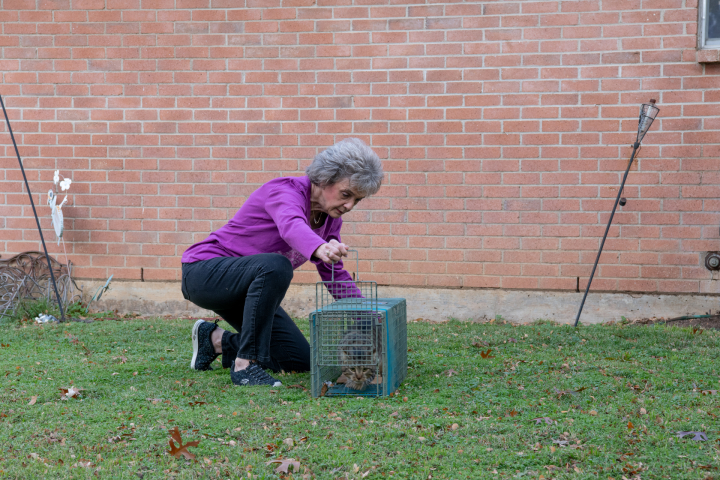What is TNVR?
TNVR is proven as the most effective and humane method to control populations of unowned, outdoor stray and feral (aka “community”) cats.
There are four steps:

Trap
Cats are trapped in a humane trap designed for this purpose, using food as a lure to get the cat into the trap. Traps are placed in the area where cats usually forage for food. Trapping is best done at night or early morning, since feral cats tend to be nocturnal and may not be seen at all in the daytime.
Note: Trapping should be avoided in severe weather conditions when it is very cold or very hot, unless one is able to continuously monitor the trap.

Neuter
Once inside the trap, cats are taken to a spay-neuter clinic that provides this service for feral cats. Many communities have clinics that provide this service for a minimal cost.
After surgery, cats must be kept somewhere to recuperate and recover from anesthesia before being returned to their outdoor home. This can be overnight for male cats or a few days for females. Many volunteers and caregivers recuperate cats in their garage, still inside the trap.

Vaccinate
During surgery, while still groggy or “out,” cats are administered a rabies shot, as required by law. Rabies is extremely rare in cats but this “V” step helps protect the community, even though feral cats usually avoid human contact. Mid-Cities Community Cats also provides cats with a feline distemper (fvrcp) vaccination to protect their health after they are returned outdoors. The benefits of these two shots can last for years so revaccination is not really necessary. M-CCC also ensures that all cats are checked for a microchip while under anesthesia.
On some occasions we have found that supposed “ferals” were someone’s lost pet, in which case we return the cat to its owner. Also during surgery, cats have one ear tipped, which is the internationally recognized sign that a cat has already been through the TNR/TNVR process.

Return
After recuperation, the cats are returned to the exact location of their outdoor home. This is always the best solution because the community cats are already familiar with their environment and may not fare well if returned to a different location. If the cats can’t be returned to the same place for some reason, acclimation to another location may be possible but takes time and is not an easy process.
Occasionally we determine that a cat is “nice” or adoptable during recuperation, so we try to place these cats with an adoption agency. These cats are often former pets that someone sadly abandoned. Young kittens can sometimes be socialized to become adoptable.

